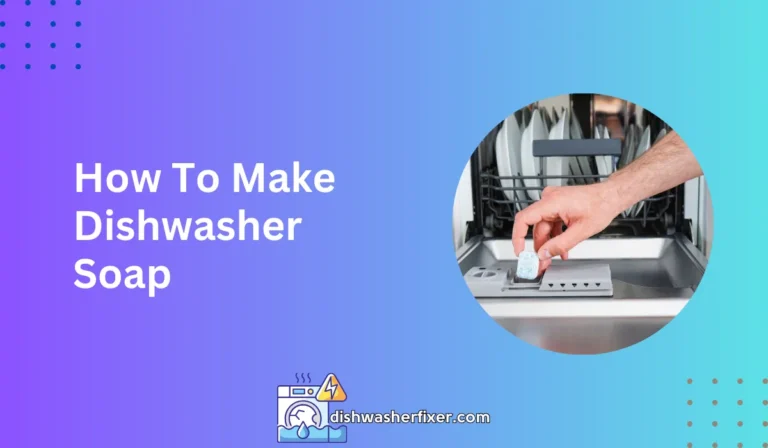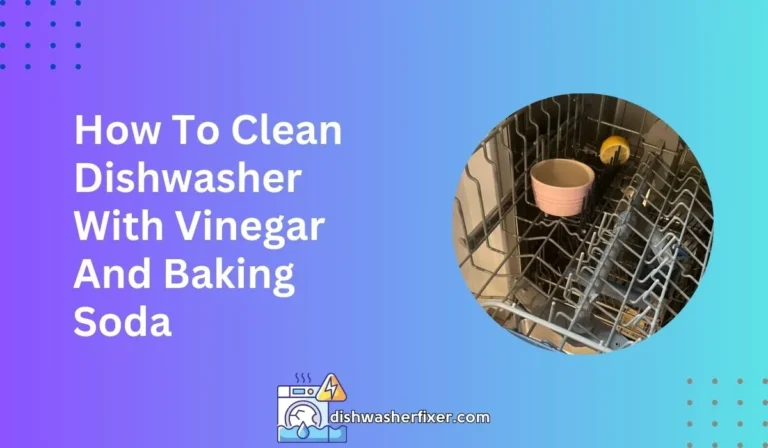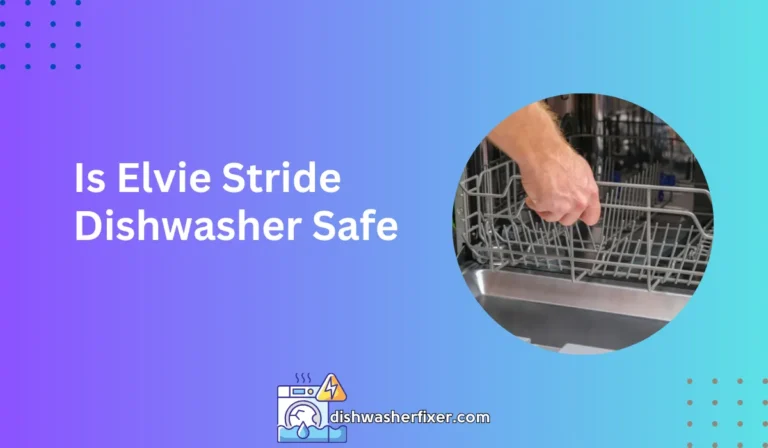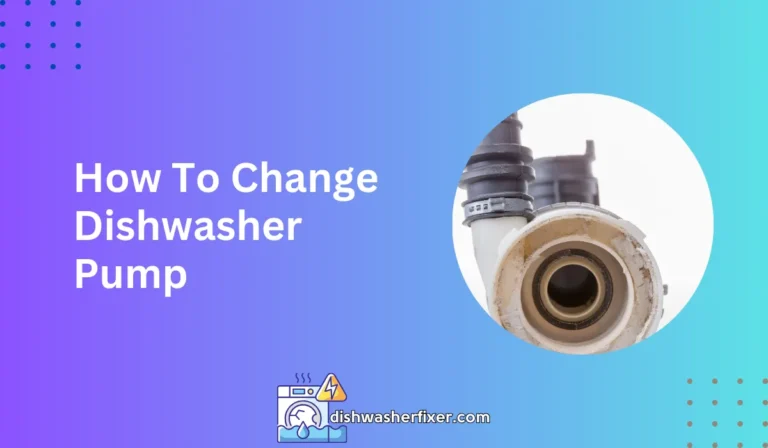Why is My Dishwasher Leaking? 5 Common Causes & Fixes
Your dishwasher may be leaking due to a worn door seal, over-sudsing from incorrect detergent use, a misaligned or clogged drain, or a damaged tub. Check these areas to identify and fix the leak source.
Common Causes of Dishwasher Leaks
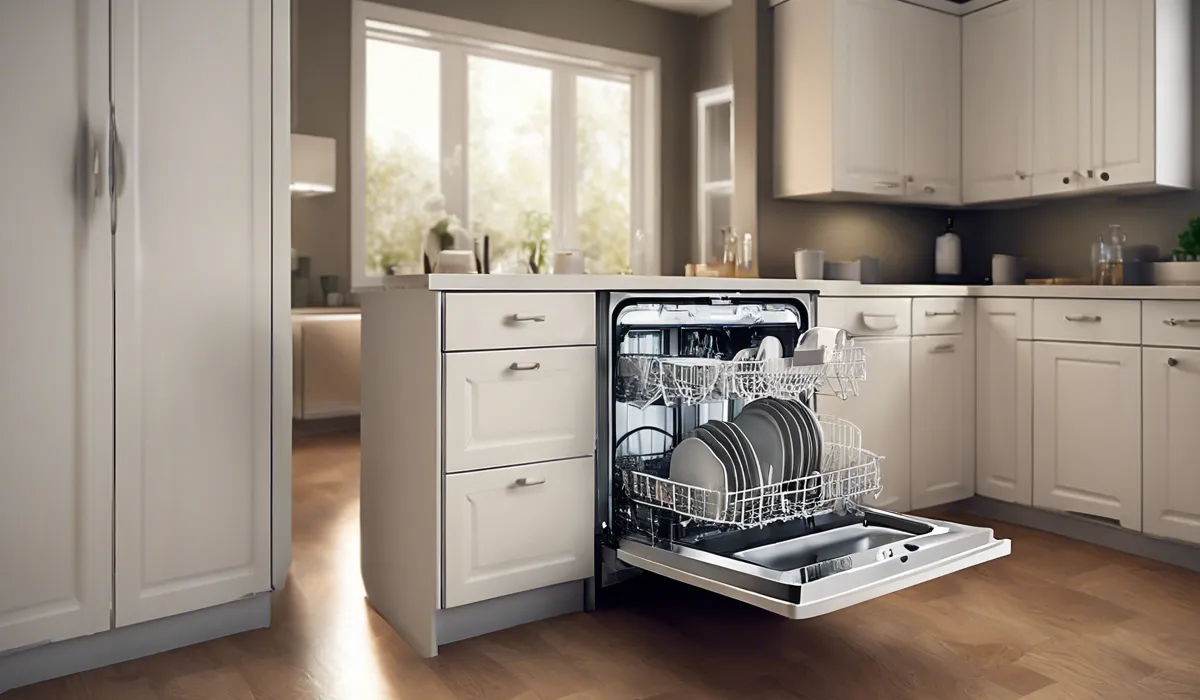
Door Seal Issues
A dishwasher’s door seal, also known as a gasket, is crucial for keeping water inside the unit. If your door seal is worn out or damaged, water can easily seep out during a wash cycle.
Over time, these seals can become brittle, crack, or lose their shape, which compromises the watertight barrier. A frequent sign of door seal issues is water puddling directly under the door after a cycle.
Hose Connections
The water inlet and drain hoses of your dishwasher are potential culprits when it comes to leaks.
They can become loose over time due to the machine’s vibrations or may deteriorate and crack, leading to water escaping.
It’s important to regularly check these connections and ensure they are tight and in good condition to prevent any leaks.
Pump and Pump Seals
The pump is what moves water in and out of your dishwasher. If there’s a malfunction or if the pump seals are worn out, water can leak underneath the appliance.
This type of leak may not be immediately noticeable but can cause significant damage over time if left unaddressed.
Overloading or Incorrect Loading
How you load your dishwasher can impact its function. Overloading it or placing items incorrectly can block the spray arms, causing water to be directed towards the door seal rather than down into the tub, potentially causing leaks.
It’s also possible for items to dislodge and damage the spray arms or other components, leading to leaks.
Detergent Use
Using the wrong type of detergent or too much can create an excess of suds. These suds can put pressure on the door seal, leading to leaks.
It’s important to use the correct detergent in the right amount as recommended by your dishwasher manufacturer.
High Water Temperature
Very high water temperatures can compromise the integrity of seals and plastic components within your dishwasher. This can lead to warping or melting, which in turn can cause leaks.
Check the recommended temperature settings in your dishwasher’s manual to ensure you’re not using water that’s too hot for your machine.
Misaligned or Faulty Dishwasher
If your dishwasher isn’t level or is installed incorrectly, water can pool and leak out. The legs of the dishwasher need to be adjusted so that the appliance is level and stable, to ensure proper operation and prevent leaks.
How to Diagnose the Source of the Leak
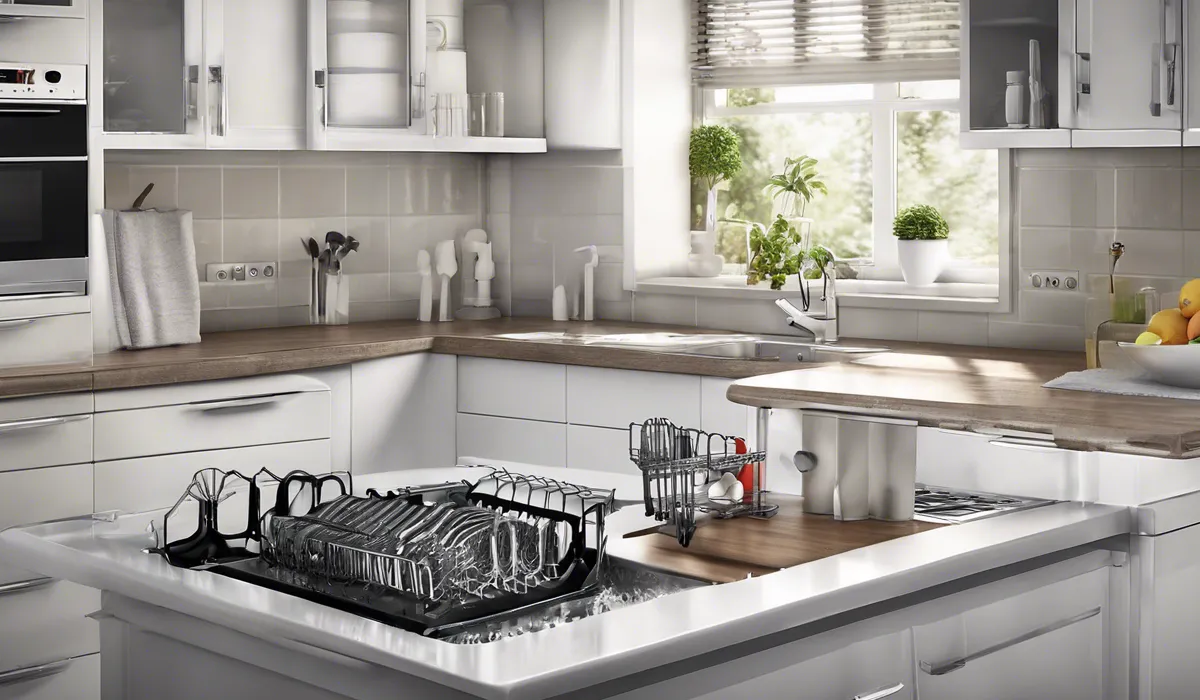
Visual Inspection
Start by inspecting your dishwasher for any obvious signs of damage or leaks. Look around the base, under the unit, and around the door. Water marks, rust, or damage are clear indicators that your dishwasher is leaking from a specific area.
Testing Door Seal
To test the door seal, you can close the door on a piece of paper and try to pull it out. If the paper slides out easily, your seal may not be tight enough. Additionally, visually inspect the seal for gaps or tears that could be the source of the leak.
Checking Hoses
Examine the hoses connected to your dishwasher for any signs of wear or damage. Check for cracks, looseness, or damage at both the dishwasher and where they connect to your plumbing. These should be secure and free from any damage to prevent leaks.
Inspect the Pump and Seals
Locate the pump at the bottom of your dishwasher and check for moisture or drips when the dishwasher is running. Be careful as the components can be hot. If you notice water, the pump or its seals may need replacing.
Load Detection
Run your dishwasher with a properly loaded set of dishes to see if the leak occurs. Incorrect loading can lead to water being directed in ways it’s not meant to go, so ensuring you’ve loaded the dishwasher correctly can rule out this potential cause of leaks.
Detergent and Water Temperature
Review the user manual for your dishwasher to ensure you’re using the correct type and amount of detergent. Also, check to make sure your water temperature settings are not too high for the dishwasher’s specifications.
Repair and Prevention Tips
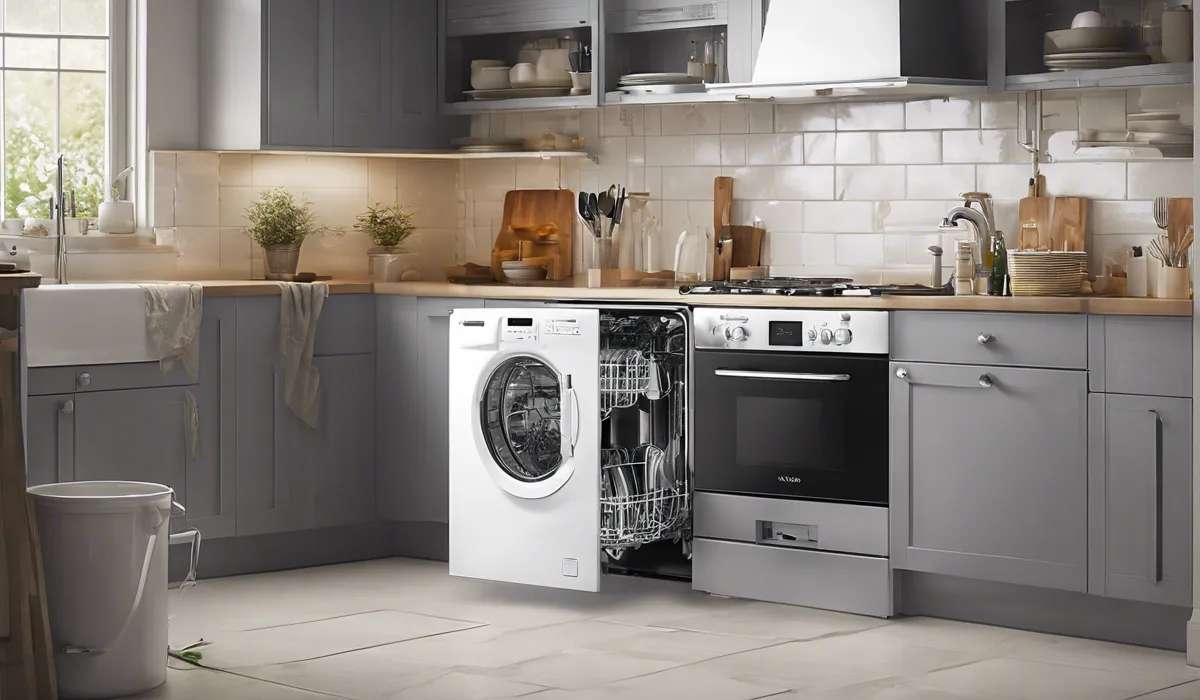
Replacing the Door Seal
If you’ve identified the door seal as the issue, replacing it is usually straightforward. Purchase the correct replacement seal for your model, remove the old seal, clean the area, and fit the new seal according to the manufacturer’s instructions.
Securing Hose Connections
Tighten any loose hose fittings with a wrench and replace hoses that show signs of wear or damage. This will help prevent leaks from the hose connections.
Pump and Seal Repairs
If the pump or seals are to blame, assess whether it’s a job you can do yourself or if you need to call a professional. Some pump repairs can be complex and may require specialized knowledge and tools.
Loading Techniques
Make sure you’re loading your dishwasher according to the manufacturer’s guidelines. This typically involves placing larger items on the bottom rack and ensuring that the spray arms can rotate freely.
Choosing the Right Detergent
Use a detergent that’s specifically made for dishwashers. Check the manufacturer’s recommendations to find out which brands and types are best for your model.
Water Temperature Settings
Adjust your water heater or dishwasher settings to ensure the water temperature is within the safe range for your dishwasher. This can help prevent damage to seals and other components.
Dishwasher Levelling
Use a level to check your dishwasher’s alignment and adjust the legs as needed to ensure it’s perfectly horizontal. This can prevent water from accumulating and leaking out.
FAQs About Dishwasher Leaks
Why is my dishwasher leaking from the door?
Leakage from the door is often due to a worn or damaged door seal that needs to be replaced to prevent water from escaping.
Can using the wrong detergent cause my dishwasher to leak?
Yes, using incorrect detergent can cause over-sudsing, which may lead to leaks. It’s important to use a detergent designed for dishwashers.
What should I check if my dishwasher is leaking from the bottom?
Check for a misaligned or clogged drain hose, and inspect the tub for any signs of damage if your dishwasher is leaking from the bottom.
Could a damaged tub be the reason my dishwasher is leaking?
Yes, a cracked or damaged tub can lead to water leakage and may require professional repair or replacement of the dishwasher tub.
How do I fix a leaking dishwasher seal?
To fix a leaking dishwasher seal, you’ll need to replace the old seal with a new one, ensuring a tight and secure fit to prevent future leaks.
Final Thoughts
A leaking dishwasher can often be attributed to a worn door seal, improper detergent usage leading to over-sudsing, a drain that is either misaligned or clogged, or damage to the dishwasher tub itself.
Diligently inspecting these components will usually reveal the cause of the leak, allowing for appropriate repairs.
